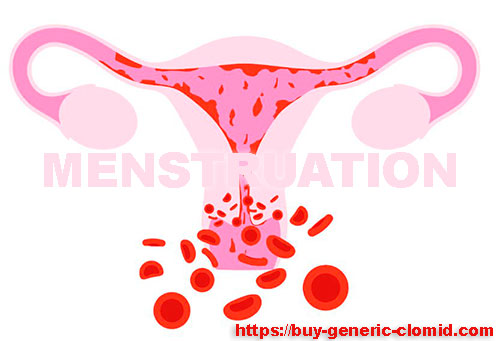After the first menstruation, a cycle is established in the female body, which on average lasts about 28 days.
The cycle of ovulation and menstruation is part of the life of any woman of reproductive age. Normally, it can last from 21 to 35 days, and all the processes that occur during this period in a woman’s body are conditionally divided into several phases.
Menstrual phase. Period lasting from 3 to 6 days – bleeding from the uterus. At this time, rejection of the mucous membrane (endometrium) occurs. When pregnancy occurs, a fertilized egg is attached to the endometrium.
Follicular phase. It starts at the same time as menstruation, but lasts a little longer – on average, 14 days. At this time, the follicle matures in the ovaries, in which, in turn, a new egg will mature. The restoration of the endometrium in the uterus also begins.
Ovulatory phase. This period lasts about three days and during this time the follicle ruptures – an egg ready for fertilization comes out of it. This process is called ovulation and can cause mild pain in the lower abdomen.
Luteal phase. Duration – from 11 to 16 days. At this time, there is an active production of hormones (estrogen and progesterone), which prepare the body for pregnancy. During this phase, there is often a phenomenon such as PMS – premenstrual syndrome.
PMS is a complex of symptoms that are associated with changes in the hormonal background of a woman. For example, they include: swelling of the mammary glands, pain in the lower abdomen, mood changes and increased appetite.
Hormones and menstruation
The main hormones during menstruation can be called follicle-stimulating and luteinizing. Both of them provide the production of progesterone and estrogen. These active substances play an extremely important role in a woman’s body, so if you have menstrual irregularities or suspected pathology of the reproductive system, you should take an analysis for hormones. It allows you to identify uterine fibroids, polycystic ovaries and even infertility.

For any difficulties with conception, as a rule, the gynecologist refers the patient to the study of hormones. For diagnosis, it is necessary to know their “healthy” concentration at different segments of the cycle – based on these data and test results, the doctor can make a diagnosis and prescribe a specific therapy.
Hormones during the menstrual phase.
Analyzes are given on the 3-5th day from the onset of menstrual bleeding
- Follicle-stimulating FSH;
- luteinizing hormone LH;
- free testosterone;
- estradiol;
- dehydroepiandrosterone sulfate;
- prolactin;
- androstenedione;
- sex hormone binding protein;
- thyroid hormones;
Hormones in the luteal phase.
Analyzes are given on the 20-22nd day of the menstrual cycle.
You also need to do an ultrasound of the pelvic organs on the 5-7th day of the menstrual cycle.
Folliculometry 3-4 times during 1 menstrual cycle.